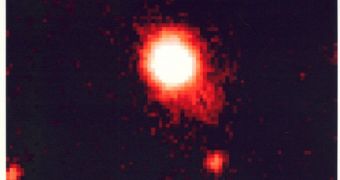Cosmic dust may be one of the most important barriers in our way to understanding the exact nature of the Universe, astronomers have recently said, following a new study by the Sloan Digital Sky Survey (SDSS-II). They have added that, regardless of an observer's position in the vastness of space, a direct view will always be obscured by a haze of tiny, smoke-like "dust" particles, which will diminish the glow of galaxies, quasars, stars, nebulae, and other celestial bodies.
“Galaxies contain lots of dust, most of it formed in the outer regions of dying stars. The surprise is that we are seeing dust hundreds of thousands of light-years outside of the galaxies, in intergalactic space,” Canadian Institute for Theoretical Astrophysics researcher Brice Menard, who has also been the leader of the team behind the new paper submitted for consideration to the journal Monthly Notices of the Royal Astronomical Society, explains.
The most affected wavelength is that of the blue light, astronomers point out. Red light finds it a lot easier to go through this barrier, and is therefore easier to notice using Earth- or orbit-based telescopes. “We see this when the sun sets: light rays pass through a thicker layer of the atmosphere, absorbing more and more blue light, causing the sun to appear reddened,” University of California in Davis (UCD) astronomer Ryan Scranton says.
“We find similar reddening of quasars from intergalactic dust, and this reddening extends up to ten times beyond the apparent edges of the galaxies themselves,” he adds. He and other team members have analyzed the light patterns emitted by more than 100,000 quasars throughout the known Universe, each of them taken by the SDSS-II. Most of these objects were situated behind approximately 20 million galaxies, which have served the purpose of their study well.
“Putting together and analyzing this huge dataset required cutting-edge ideas from computer science and statistics. Averaging over so many objects allowed us to measure an effect that is much too small to see in any individual quasar,” Drexel University astronomer Gordon Richards, another member of the team, shares.
“Just like household dust, cosmic dust can be a nuisance. Our results imply that most distant supernovae are seen through a bit of haze, which may affect estimates of their distances,” Scranton concludes.

 14 DAY TRIAL //
14 DAY TRIAL //